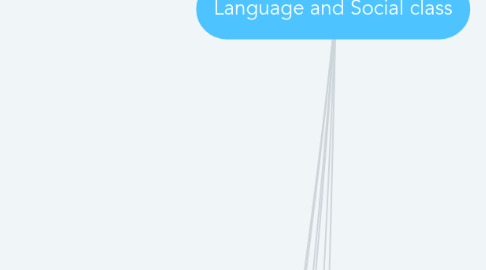
1. Caste System
1.1. In India, unlike in the Western societies, traditional society is stratified into different castes. Castes are relatively stable, clearly named groups, rigidly separated from each other, with hereditary membership, and with little possibility of in and out movement. Different castes speak different varieties of language. Because of rigid separation between different castes, caste dialects tend to be relatively clear-cut, and caste dialect differences are sometimes greater than regional dialect differences. Caste dialects are thus easier to study and describe than social class dialect.
2. Dialects
2.1. - The variety of language that is used by a particular social class -May include phonological, grammatical, lexical, and phonetic (accent) differences. -The different classes of society are separated by social barriers and distance, similar to ‘geographical ones’.
3. Social Stratification
3.1. - Social stratification is a term used to the hierarchical ordering of a society, - Found in the industrialized Western World, - Social classes are not clearly defined or labeled entities. - Social mobility is possible. - Sociolects are not easy to study, and describe, because they form a continuum and are rather complex and fluid entities. - Western-type social-class stratification is not universal..
4. From Rural to Urban
4.1. In the past, dialectologists focused their study of language variation on geographical dialects of rural areas. They were concerned to record many dialect features before they were lost. They thought that, unlike in the city, in the rural speech of older and uneducated speakers, there were the ‘real’ and ‘pure’ dialects. It turned out later that the ‘pure’ homogeneous dialect is a myth since all language varieties are subject to variation and change. Dialectologists, then, began to incorporate social as well as geographical information into their dialect surveys This paved the way for urban dialectology which then became ‘sociolinguistics’.
5. The Rise of Sociolinguistic
5.1. Research
5.1.1. Sociolinguistic investigation of language variation gained momentum beginning 1966 when the American linguist William Labov published The Social Stratification of English in New York City. The study is probably the first of its kind which correlated linguistic variation with social variation.
5.2. Labov’s New York Study
5.2.1. The study tests Labov’s hypothesis that non-prevocalic /r/ usage (as in farm, fair) correlates with social class of the speaker.
5.2.2. Labov examined the speech of shop assistants in three different department stores, of high, medium and low social status.
5.2.3. The procedure was to find out which departments were on the 4th floor and then ask as many assistants as possible a question like: Excuse me, where are the women’s shoes?
5.2.4. The answer to this question would be 4th floor, with two possible occurrences of non-prevocalic /r/.
5.2.5. Information on /r/ usage was obtained from 264 informants.
5.3. Results of Labov’s New York Study
5.3.1. 38% of the high ranking store assistants used no /r/.
5.3.2. 49% in the middle ranking store used no /r/.
5.3.3. 83% in the low ranking store used no /r/.
5.3.4. Thus, Labov’s study showed how a relatively trivial feature of accent can be important socially.
